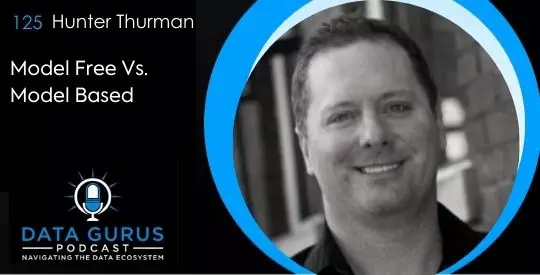Podcast: Play in new window | Download
Sima Vasa is excited to welcome Hunter Thurman, the President and Founder of Alpha-Diver, as her guest today. Hunter has been in the insights and strategy world for the last twenty years.
Some background for Alpha-Diver
In 2011, Hunter got to a point where he felt dissatisfied with how he was doing insights and research and translating it into a strategy. (Subsequently, he learned that his approach had been model-free. And the industry had also been operating in a model-free way at the time.)
Around that time, Hunter started exploring, stepping out of the industry, and hanging around with neuroscientists, psychologists, and people from the world of academia. He forged a copasetic relationship with the academics, which became the basis for the company, Alpha-Diver. They use mostly neuroscience. But they also use a lot of psychology, which they translate for business applications to answer the questions that help companies serve their consumers.
A framework
Hunter later realized that when you have a framework, a place to start, a foundation, and a model, it’s much more rewarding. And it can lead to much richer discoveries.
The pain point
With the model-free approach, it was hard to explain how they were doing what they were doing. Although Hunter was in a leadership role, he did not feel that he could teach very well because he did not have a model from which to work.
In a model-based space
In a model-based space, you are going out, and using an established model instead of collecting data broadly and bringing it back to an existing model.
Some surprises when talking to people in academia
Hunter was surprised at how applicable the academic knowledge that he received was. He was also surprised at how relevant those insights could be, how little connectivity there is from the academic world to the rest of the world, and how dissatisfied many academics are. He had always assumed that neuroscience would be far more technical, far more physiological, and much less applied than he discovered it truly is.
Insights challenges
Going out, and looking at insights challenges, whether you are looking at the segmentation, the journey mapping, or the drivers and barriers of your brand or category, is very chaotic, noisy, and difficult to organize. That caused researchers to overlook what is going on between the ears of a consumer. Yet we have quite a simple explanation of human cognition and the lenses we use to react to the world around us.
What a model-based approach means
A model-based approach can be likened to us using all five of our senses.
Neuroscience
What neuroscience has discovered is that there are durable and predictable drivers and barriers, which are pretty simple, and happen mostly subconsciously in people’s brains.
The 9 Whys
Hunter and his partners developed a framework that they call The 9 Whys. It tells us that there are four drivers and five barriers that can simplify the world.
The drivers
The drivers range from very rational and practical, to social and tribal, sensory and exploratory, to impulsive and instinctive. In a given context, one of those four drivers would become the primary lens that a person uses to make decisions. And in a different context, a different driver could apply to the same person.
Context
We have gained from neuroscience the recognition that context has an enormous impact on the driver that we are using. Currently, occasions are the incarnation of how the industry is looking at context.
The five barriers
The five barriers are:
- Price (Price is the least punitive)
- Time
- Effort or Physical barriers
- Social
- Emotional
The questionnaire
The questionnaire that Hunter and his team are using is simple in that it can get administered in a regular survey. The data from it provides them with certain tells of an individual’s psychology, and their cognitive processes, in the context they are studying. And the algorithms on the back end let the computer know what those responses mean and help the strategy team understand them.
Consumer’s decisions
From one of his studies, Hunter discovered from the subconscious data provided that the consumer’s decisions were based far more on their personal preferences than they realized. It revealed that the consumers were more self-reflective than socially reflective. The study was wildly successful, and it drove a double-digit increase.
The future
Hunter thinks that the merging of qualitative and quantitative will continue in the future.
Hunter’s quotes:
“I had the assumption that neuroscience was going to be far more technical and far more physiological and much less applied than I discovered it is.”
“In a model-based space, you are going out and using an established model instead of just collecting data broadly and bringing that data back to an existing model.”
“When you have a framework, a place to start, a foundation, a model, it’s much more rewarding, and it can lead to much richer discoveries.”
“We bought in that world of mostly neuroscience, but there is a lot of psychology that we use as well, translating that for business applications, to answer the questions that help companies serve their consumers.”
“What I was experiencing in the model-free was that it was hard to explain how we were doing it.”
Links:
Email me your thoughts!
Hunter Thurman on LinkedIn
Sponsors:
The In-Person Qualitative Collective




